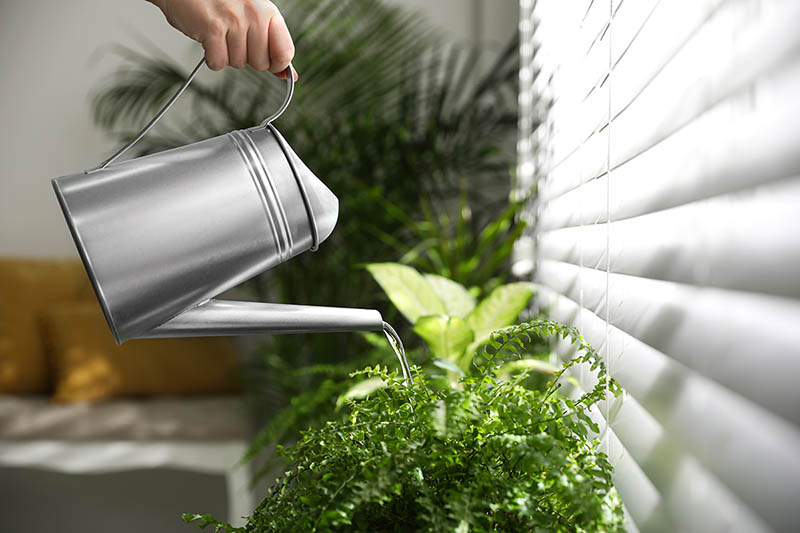Benefits of House Plants and 7 Tips for Growing Them
Here are tips to help you keep your house plants healthy and thriving, so they can help you do the same.

House plants are the perfect way to make a room feel homier or make an office space seem clean and welcoming. In addition to being aesthetically pleasing, studies have suggested that house plants may help you feel calm and even improve your concentration.
Here are some interesting health benefits that plants can have:
Plants may improve the quality of your indoor air
Plants can help clean certain pollutants from the air in a process called phytoremediation. When NASA scientists were looking for ways to keep air quality safe in sealed spacecrafts, they found that plants helped decrease organic pollutants in the air.
They also found that some of the most effective plants for keeping the air clean are bamboo palms, Ficus trees, and Boston ferns.
Plants can provide allergy relief
Some plants, especially those with lots of leaves, can act as natural air filters. The ridges and textures of the leaves can catch and filter airborne particles and pollutants that could be causing your itchy, watery eyes and sneezing.
Some great plants for allergy relief include lilies and violets, due to their textured leaves. Avoid plants that produce pollen or that flower frequently as they may cause more allergic reactions.
Plants can help moderate air humidity
Dry air can make your skin crack and itch, especially during the winter. But if you have houseplants, the water vapor that your plants produce can help moderate the humidity in your home, making it easier to breathe and helping with skin hydration.
Some plants can be eaten
Indoor plants can be cute and decorative, but they can also be very functional. Herbs are easy to grow, look great as house plants, and are often edible.
Some plants can be made into teas, dish garnishes, and home remedies for sore throats and upset stomachs. Some of the best plants for this include mint, basil, and rosemary.
Plants may help boost energy
Plants absorb carbon dioxide (CO2) and release oxygen, which can help you fight off fatigue. Some plants also release extra oxygen when they bloom more at night, such as orchids and succulents. These specific plants may help improve your sleep and feel more energized when you wake up.
Related: Natural Energy Boosters: 6 Tips to Get More Energy Over Time
Here are some tips you can try to help keep your plants alive and healthy.
- Create a drainage system for your plant. Choose a pot or container that can let the excess water drain easily. As you pot the plant, you can put rocks in the bottom before adding your layers of dirt. This will keep your plant roots off the bottom of the pot because if the roots are sitting in excess water, they can rot more easily.
- Aerate the dirt. Sometimes the dirt in your pot can get packed down over time. Consistent watering will make the dirt more compact over time. To aerate the dirt for your plant, carefully poke holes with a bamboo skewer. This mimics the kinds of tunnels and air holes that worms would naturally create if the plant was outside.
- Be consistent. Try to be consistent with the amount of water and light your plant gets. If your plant seems to be struggling, you can try to make an adjustment, but don’t make changes every day. Plants can usually adapt to their surroundings and they need time to get used to their situation. If you’re moving your plant around constantly, it doesn’t know how much sunlight to expect.
- Occasionally add fertilizer. As plants grow, they slowly deplete the nutrients in the soil. Every so often, you can add some fertilizer to help your plant stay healthy. Some plants will be fine with just some extra potting soil while other plants may need specific fertilizers from a garden store. Some plants, like orchids and violets, can use coffee grounds as fertilizer because they like the soil to stay slightly acidic.
- Keep plants away from vents, fans, heaters, and air conditioners, which can expose them to air that is either too hot or too cold. Be mindful of doors and windows too. They are sometimes not well insulated and may lead to more drastic temperature changes than the plant can handle.
- Customize your watering routine for each plant. If you have multiple kinds of house plants, they each may need a different amount of water. Do your research on your plants before you water them.
Some may prefer mist and others may prefer ice cubes placed on top of the dirt that slowly melt.
A good test is to push your finger about two centimeters into the dirt. If the dirt is moist or sticks to the tip of your finger, your plant has enough water. If it’s dry, or if there’s a gap between the top of the soil and the edge of the pot, it’s too dry and needs water.
- Remove dead plant matter. This is especially important for flowering plants. If your plant produces flowers, the petals will eventually wilt, die, and fall off. This is normal, but pulling off the dead flowers and leaves can help stimulate new growth, a process called “deadheading.” As a bonus, you can leave the dead matter in the dirt and it can fertilize itself.
Related: 7 Surprising Ways Gardening Improves Your Health
As you bring these beautiful pieces of nature into your home, you now have the knowledge to keep them alive and healthy so they can do the same for you.







